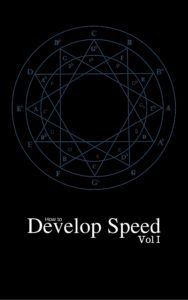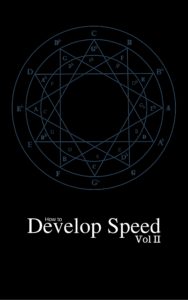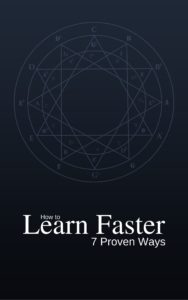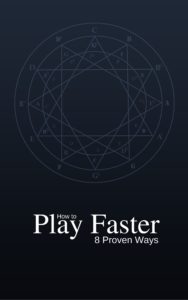A lot of people want to be good at the guitar, but not everyone is. Everyone wants to play lightning fast, but not everyone is able despite practicing long hours. Why is this?
The most common advice about How to Develop Speed on the Guitar is to play everything painfully slowly, use a metronome, and build speed incrementally over time. It makes sense. It sounds reasonable. But why is it that out of the thousands of guitar players trying to improve their right and left-hand speed, only a slight percentage can get impressive results?
The information available on the internet, guitar sites, and forums, as well as favorite books, many of which are about sports or physical activity and are associated with scientific research, generally say the same thing.
But the majority of guitarists that I had known who have used this method either give up out of boredom and frustration or develop repetitive stress injury and never improve the speed they want.
Many will incorrectly conclude they don’t have the talent. Or worse rationalize how playing fast is not that important. Then settle for mediocrity.
Getting fast on the guitar is easier than you think
I wrote an ebook called Developing Speed where I outline some of the problems you likely face that is common to most guitarists and how you can overcome the obstacles holding you back.
Developing speed on the guitar is likely easier for you to achieve than you think. What’s usually missing, nine times out of ten, are two crucial things.
One is a structured approach to playing and practicing. The other is focussing on weakness.
You are likely much closer to your goals than you realize, but there is something that you are unable to see standing in your way. When you focus on your weaknesses, your faults usually grow bigger. You might have heard the saying, “where attention goes, energy flows.”
The key is to focus on your strengths
By focussing on where you are naturally strong, you keep your mind free of fear. Your starting point is already more positive and will have more momentum than if you look at where you are weak and try to fix it.
Your moods and mental well-being will massively affect your progress. Your moods are not determined by your where you are right now, but rather, where you are going. This is why goals are so important. Your mental strength is determined by your trajectory.
When you give attention to your weaknesses you tend to look backwards. You come to practice with a feeling of scarcity and fear. Youre not sure if you can do it or not.
In contrast when you start from a position of strength you feel good right from the beginning. It feels more natural to you and therefore you have more confidence. This is key.
Frameworks
The second thing holding you back is a lack of structure. You need a framework for both playing and practicing.
Frameworks are robust and are something you already use on a daily basis. For example, your alarm goes off. You get out of bed. You have a morning routine. You go to work or school. You likely do the same things on most days.
This is a framework. The school is a framework. Your workplace is also a framework.
When you write an essay or a blog post you use a framework like an intro, body, conclusion. Songwriters and composers use frameworks to write songs. Songs themselves are essentially frameworks consisting of intro, verse, chorus, outro.
Applying a framework to how you play and how you practice, will eliminate a lot of randomnesses and accelerate your progress.
What I teach in this book Developing Speed is conceptual. The licks and examples may be technically beneath you. But what I want to convey is the approach I took to improving. The biggest changes coincided with a massive shift in my mindset.
Here are some of the things that I address in the book:
- One powerful secret I learned from my teacher Greg Howe about speed
- The one thing you should focus on to play fast
- Why playing slow does not make you fast and what does
- How to develop blazing speed over the long term without injury
- Why do people not get fast even though they practice all the time
- How to use space and time to sound fast
- How to use intervals to create speed
- Easy ways to shift scale positions
- Licks and examples
 You can immediately download this book for free as well as access an ongoing growing training library of ebooks, video, and more
You can immediately download this book for free as well as access an ongoing growing training library of ebooks, video, and more
When you claim your free membership, you’ll get instant access to a treasure chest of proven training
MEMBERS RESOURCE LIBRARY FOR MUSICIANS AND TEACHERS
Once you register, you’ll have continuous access to the resource library via the username and password you choose. We’ll also send you brief announcements when new content is posted. As always, we respect your privacy, and you can unsubscribe at any time.





